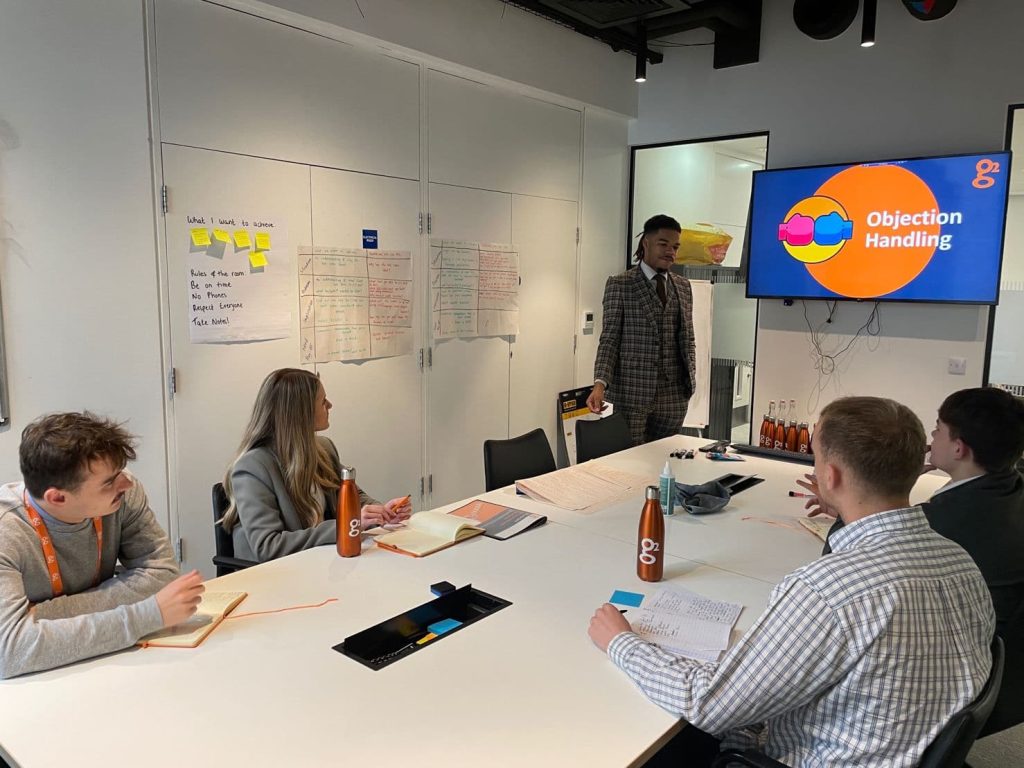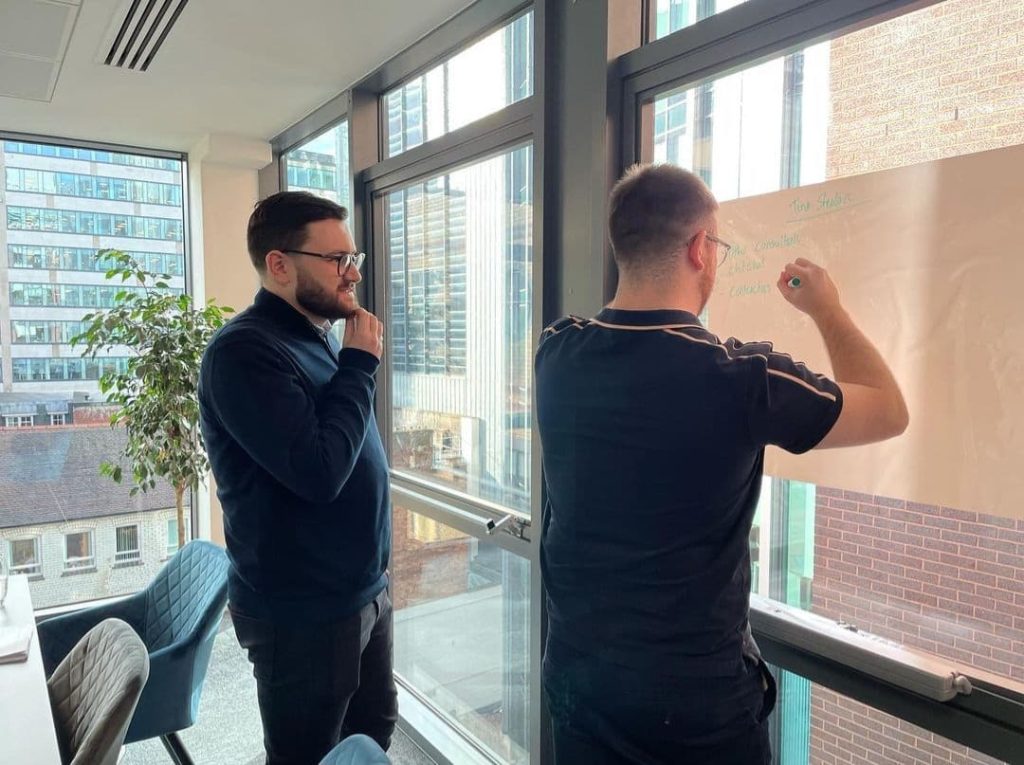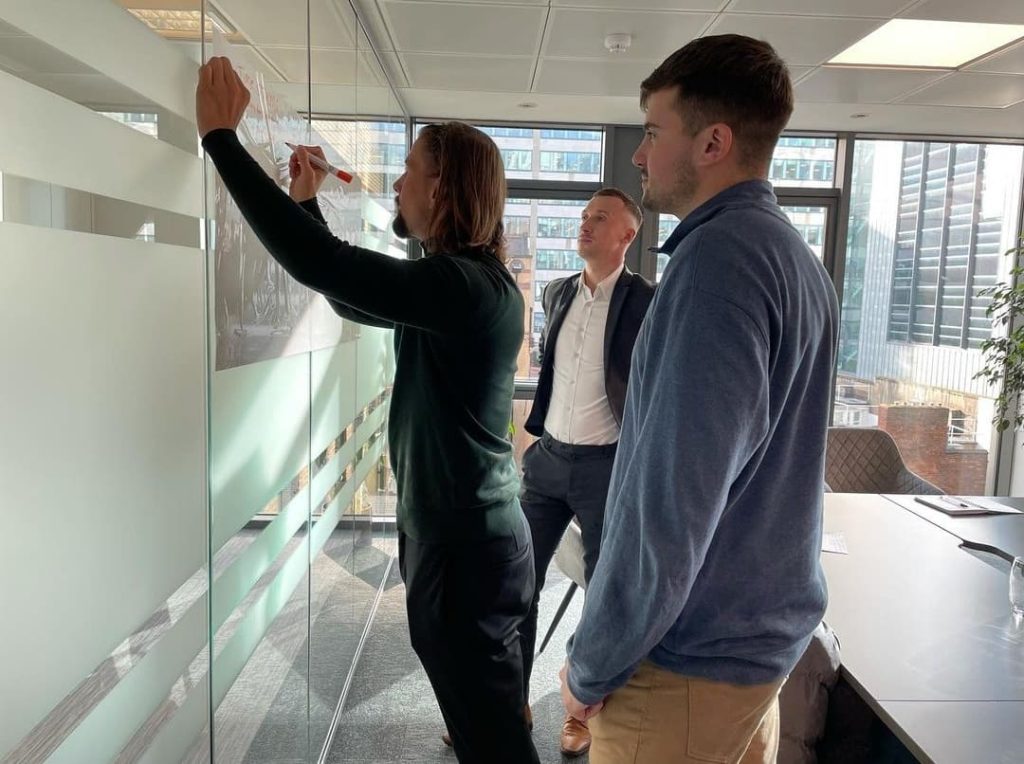The AI lens is undoubtedly becoming a part of our everyday norm.
It holds a wealth of benefits and presenting quick fixes to mundane, time-consuming tasks resulting in efficient processes and results. A tool we have all anticipated and can utilise to full effect.
When reviewing CV’s ‘Over 90% of employers use applicant tracking systems (ATS) to screen resumes before a human even sees them’ – Chat gpt.
The human eye however will review CVs in a different way to AI, giving recruiters an edge to automated processes. Understanding these differences is crucial for job seekers, here we will go through the advantages and limitations of both perspectives.
How AI views your CV:
It uses ATS and keyword matching
AI tools scan through CV’s picking up on keywords that are related to the job description, when creating a CV, this is something candidates should keep in mind and could help generate prompts to start the writing process. Candidates should keep the formatting for AI scanners simple and avoid images and fancy font, this is to ensure AI can read the CV correctly and ensure nothing is missed.
Presents Data and Structure:
The structure of your CV is important to the AI lens; by ensuring your skills and qualifications are presented in a bullet point format, you make it a lot easier for AI to read through your experience and rank it accordingly.
Be cautious of the risk of over-optimisation:
Though using the above factors to format your CV as a starting point can be useful, ensure you don’t focus too heavily on keyword stuffing, this can make your CV sound robotic and lack that personal flare that stands out to hiring managers and recruiters.
How Humans will read a CV:
Appreciates a personal touch:
A human eye is capable of detecting, you guessed it, a human touch. A recruiter will focus on a narrative, storytelling, and how a candidate would fit in the culture of a company, ‘73% of professionals have left a job because of poor cultural fit’ and ‘90% of employers say it is very important to find candidates who are a good cultural fit’ – Robert Wallace Survey.
Can identify soft skills:
Recruiters will look out for indicators of soft skills such as strong communication, problem solving, and leadership abilities which can be crucial when placing a candidate in their ideal role.
How you can stand out to a recruiter:
To ensure your CV doesn’t fall short and misrepresents you and your personality ensure you focus on clarity, readability and include your achievements in past roles. A professional tone is needed throughout your CV writing but allow some personality to shine through, this can set you apart from other candidates and sway the recruiter to put your CV forward over your opposition, do this by including hard skills and soft skills in your application.
A Holistic review:
A recruiter will also have a holistic approach to reviewing a CV and consider aspects like career progression, gaps, and personal achievements and how these align with company values. This will allow for a deeper understanding of how a candidate will fit into a company and the how to secure the role they are going for.
So, how can we optimise our CV’s for both perspectives?
In a nutshell, when searching for a new role, candidates do have to ensure their CV is compatible for ATS systems by creating a well-structured, readable CV that is optimised for automation. However, when searching for a role that suits your hard and soft skills, personality and careers aspirations, a recruiter’s guidance and perspective is incomparable. The human eye will bring a more comprehensive and empathetic approach to placing candidates in positions and recognises potential an AI function is not capable of. For job search success, find the right balance between structure and readability, using AI parameters but make sure your CV has that personal flair to attract a recruiter and finding a perfect match for your career aspirations and a company needs.






